Wensley
OS grid reference:- SE 092 895
Wensley is a small but characterful village in Lower Wensleydale and lies just outside the Yorkshire Dales National Park. The village is pleasantly situated, being set amongst superb scenery and sheltered by a long ridge of hills. It is located on the A684 road and is around a mile (1.6 km) to the south-west of Leyburn.
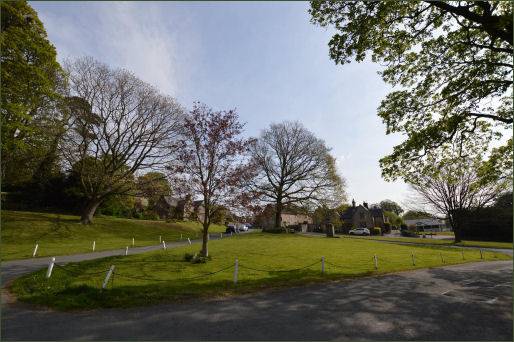
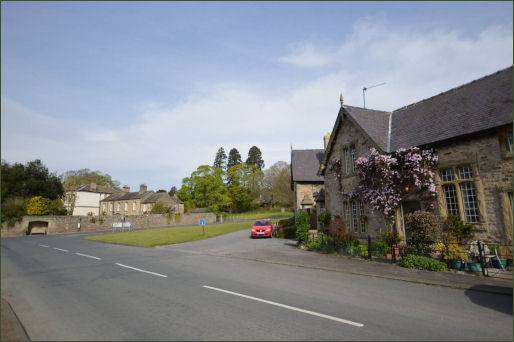
Wensley gives its name to the valley of Wensleydale and stands by the River Ure at the point where it is crossed by a fifteenth century bridge, which was probably built money left by Richard first Lord Scrope for the repair of an earlier bridge. The village has a long history and is mentioned in the Domesday Book of 1086, where it is recorded as Wendesley.
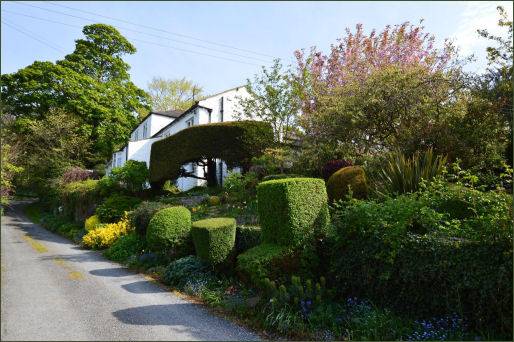
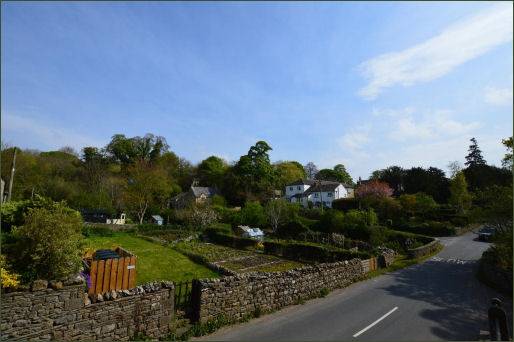
Wensley was once home to the only market in the dale, its market charter was granted by Henry le Scrope, Chief Justice, in 1318. The village remained the hub of local trade until it was badly hit by the plague in 1563. So badly did Wensley suffer that a field called Chapel Hill was used for the burial of the victims, many of the surviving villagers fled to nearby Leyburn. The registers of the parish church record- "The reason as some thinke that nothinge is found written in this register in the yeare of our Lord God, 1563, is because that in that yeare the visitation or plague was most hote and fearefull, soe that many fled, and the towne of Wensley, by reason of the sickness was unfrequented for a long season; as I find by one olde writinge, dated 1569, p. me Jo. Taylor." Although Wensley eventually recovered, it caused the focus of trade to shift to Leyburn and then Hawes.
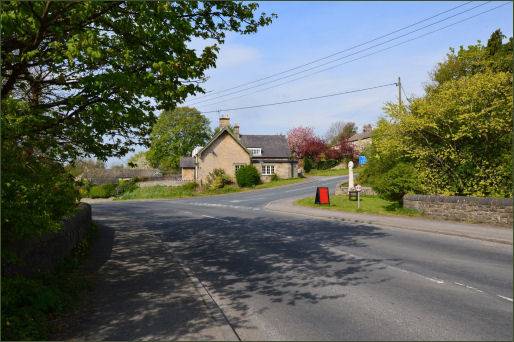
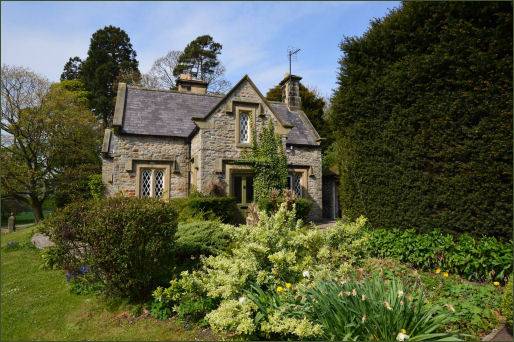
Bolton Hall was constructed in 1678 and was rebuilt after a fire in 1902. It belongs to Harry, 8th Lord Bolton and his family, whose ancestors have owned parts of the estate since 1149. The village pub the Three Horseshoes, a traditional country inn, stands at the heart of Wensley and serves home made cuisine, and White Rose Candles, a visitor attraction in the vilage, demonstrates traditional candle making. The White Rose Candle Workshop is a small family business it has operated in old watermill at Wensley since 1978. Visitors may watch the various processes involved in the manufacture of candles including traditional dipping techniques and casting methods. The building housing the workshop was once a nineteenth century water mill - the water wheel still exists and mills have been recorded on the site since 1203.
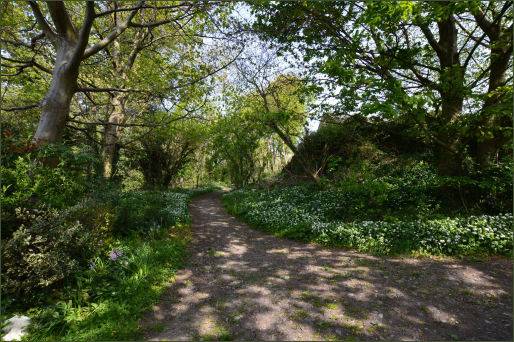
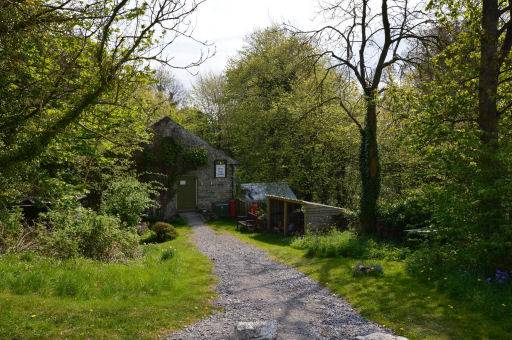
The Wensley waterfall is situated behind the old mill used by the Wensley Candlemakers.
Holy Trinity Church
The village church of Holy Trinity stands in a picturesque position on the banks of the river Ure at Wensley.
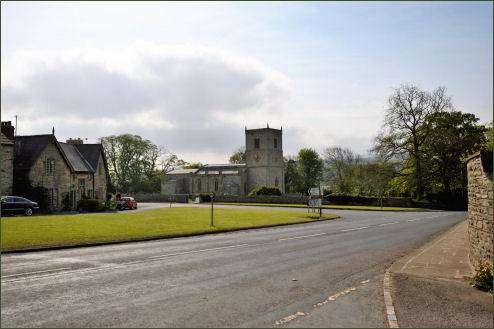
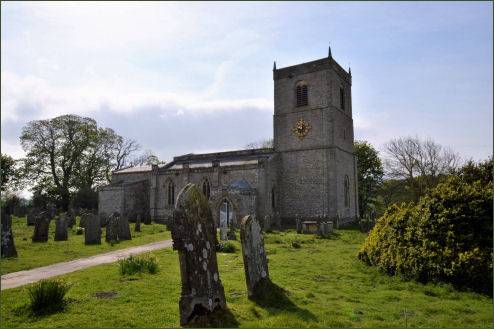
The building dates back to the thirteenth century and houses many fine examples of Saxon stonework.The church is built on eighth century Saxon foundations and a number of carved Saxon stones are built into the walls. Additions and alterations were carried in the fourteenth and fifteenth centuries, and the tower was added in 1719. The church was restored in 1927 when the roof was renewed, and the whitewash on the walls was removed. During the work wall paintings depicting Jacob and Esau which were uncovered and restored as far as possible.
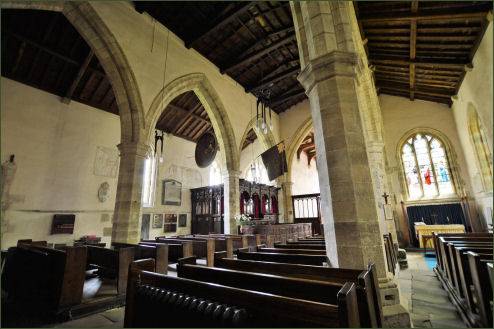
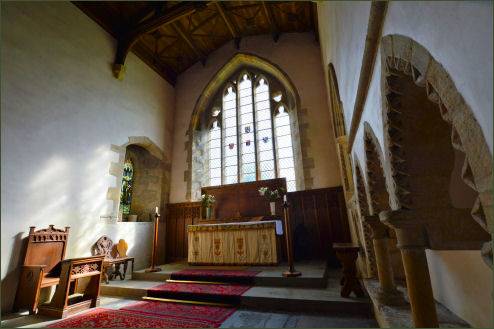
Inside the church are a pair of Anglo-Saxon cross slabs dating to the eighth century and inscribed 'Donfrid' and 'Eadberehct'. There are also further fragments of eighth century slabs, a section of tenth century cross shaft, and an eleventh century cross shaft. An impressive wheel-head cross and cross shaft are embedded in the walls of the south porch. The interior also boasts some good fragments of Medieval wall paintings, including a mural of 'the three living meeting the three dead', a popular theme in the later Middle Ages, although only the legs have survived to the present day. The interesting choir stalls have carved ends dated 1527.
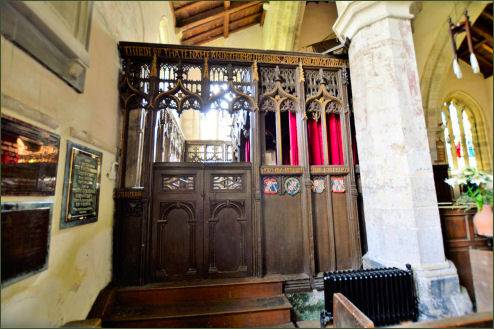
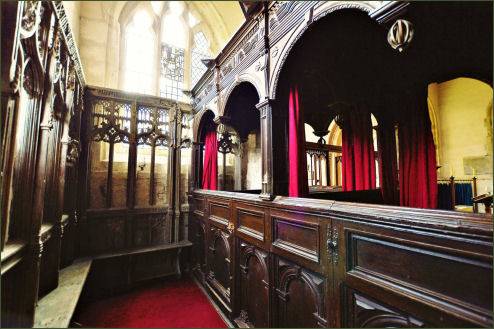
The nave contains the Scrope family pew with a seventeenth century front and, at the back is a carved parclose screen from the early sixteenth century, this was moved from Easby Abbey, or the Abbey of St Agatha as it is sometimes known, at the time of the Dissolution of the Monasteries. The pew has eighteen panels, each elaborately carved, depicting, in heraldic blazonry, the various alliances of the Scrope family. The Scropes were an influential northern family, who owned nearby Bolton Castle. The Castle was built by Sir Richard le Scrope, Lord Chancellor of England to Richard II and ihis descendants still live there today.
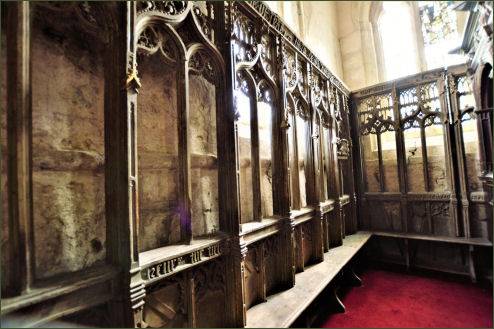
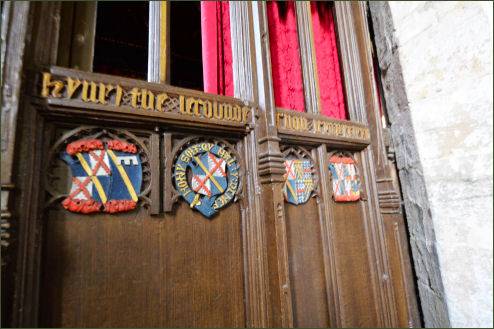
The nave also contains seventeenth century benches and box pews dating from the eighteenth century, the double-decker pulpit also dates to the eighteenth century. In the east window of the south aisle are fragments of medieval stained glass.
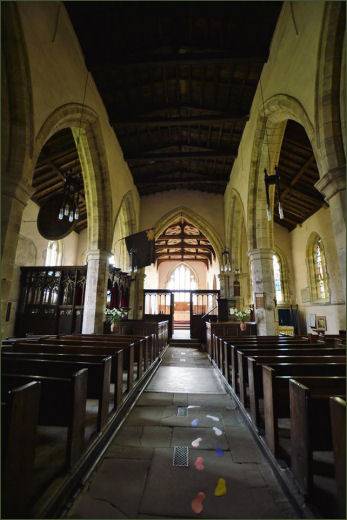
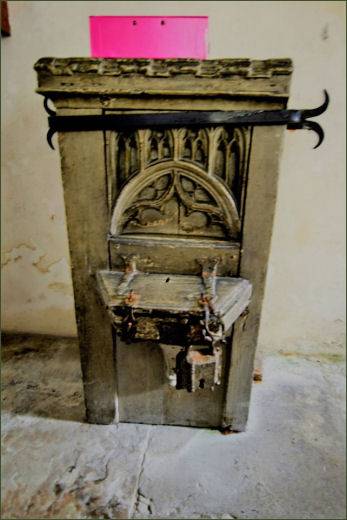
There is an octagonal font dated 1662 with a wooden cover surmounted by a pineapple finial, at the back is a carved parclose screen from the early sixteenth century, which was moved from Easby Abbey at the Dissolution of the Monasteries. There are also fine Flemish brasses and a panelled reliquary box ( pictured above right) dating to the fifteenth century, which, it is claimed, once held the relics of St Agatha.
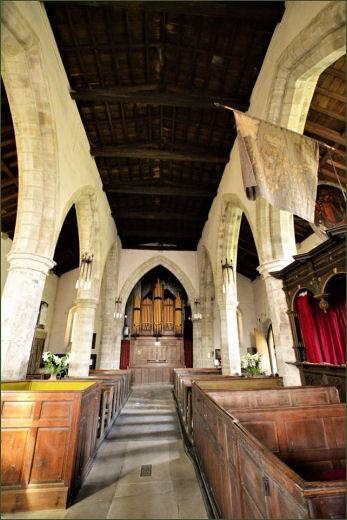
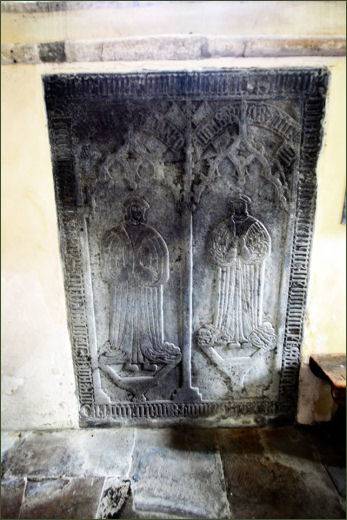
Holy Trinity is featured as the wedding venue of James and Helen Herriot in the British television series All Creatures Great and Small, in the episode "The Last Furlong". The building is no longer used and is now in the care of the Churches Conservation Trust.
Images courtesy of Paul Johnson
Abbeys and Churches of Yorkshire
